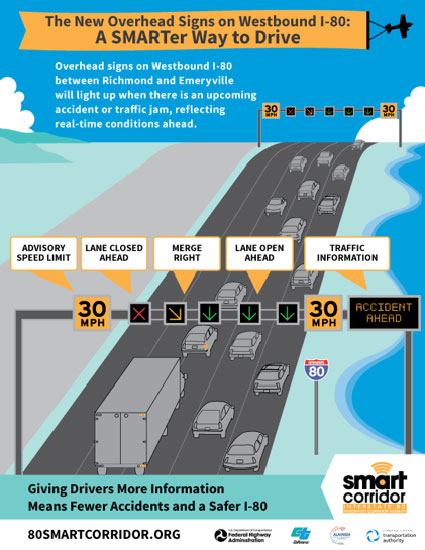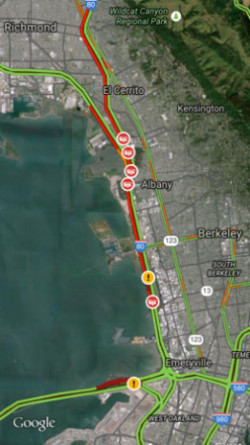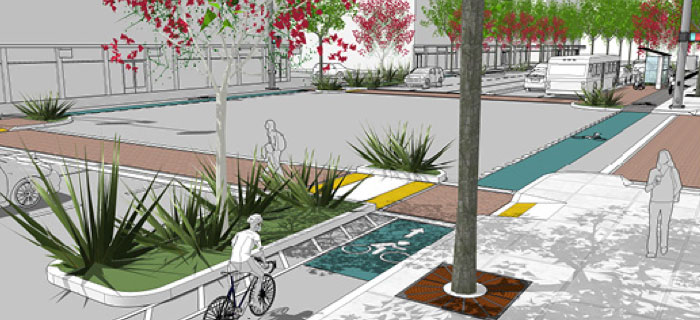If you’ve recently traveled along I-80 in the East Bay, you may have noticed new electronic signage and metering lights. Caltrans is currently putting the finishing touches on the I-80 Smart Corridor project, a new approach to managing traffic congestion along one of the region’s worst corridors. The Smart Corridor project uses a sophisticated Intelligent Transportation Systems approach to congestion management: it seeks to optimize roadway operations on I-80 between the Carquinez Bridge and the Bay Bridge to enhance safety, improve reliability, and reduce collisions. However, the project’s smart approach to tackling congestion is fatally flawed in its approach to San Pablo Avenue, where it will adversely affect people walking and biking.

The Smart Corridor includes five components:
• Adaptive ramp metering manages the flow of traffic onto and along I-80 in real time, making it safer for drivers to merge onto the interstate. The ramp meters are coordinated and can adjust the rate at which they let traffic through, alleviating backups on local streets.
• Incident management provides real-time information to motorists in the event of an incident to reduce unexpected lane-changes, provide easier access for emergency response vehicles and reduce secondary collisions and congestion associated with such collisions.
• Improvements on San Pablo Avenue and crossing arterials include “Trailblazer” signs to tell drivers who detour around a collision when to return to the interstate, and signal timing improvements to improve traffic flow and bus operations on San Pablo Avenue.
• Traffic information boards advise drivers of traffic conditions ahead and expected travel times.
• Integration of interstate and local arterial information into one region-wide system supports the management and coordination of traffic along I-80 and San Pablo Avenue in real time.
The improvements along I-80 are worthwhile and consistent with best practices across other regions, but the inclusion of San Pablo Avenue is worth a closer look. The I-80 Smart Corridor utilizes San Pablo Avenue as a relief valve for I-80, prioritizing the movement of diverted freeway traffic through the corridor. Caltrans has retrofitted signals to better serve drivers by providing signal prioritization, longer green lights, and “Trailblazer” wayfinding signs. In the event of a bad traffic jam on I-80, drivers can expect to exit onto San Pablo Avenue and be whisked through the corridor with priority through each intersection.
While congestion relief sounds like a winning idea, people walking and biking come out as losers in the project. By prioritizing moving cars through the corridor, people crossing San Pablo Avenue on foot or riding a bike will face greater delays at signalized intersections, and more dangerous conflicts at unsignalized intersections. The project’s $79 million budget provides no funding to mitigate any of its adverse effects associated with encouraging people to drive along San Pablo Avenue.
For the cities of Richmond, El Cerrito, Albany, Berkeley, Emeryville, and Oakland, San Pablo Avenue is not a congestion relief valve for freeway traffic; it is an important but dangerous commercial and transit corridor. To address key safety challenges on San Pablo Avenue and promote economic revitalization, cities like El Cerrito are pursuing a people-first approach that includes pedestrian and bicycle safety improvements to make it a more livable street. In contrast, dumping more cars onto San Pablo Avenue will exacerbate the existing safety challenges that San Pablo Avenue poses for people walking and biking and reinforce its role as a barrier between communities.





